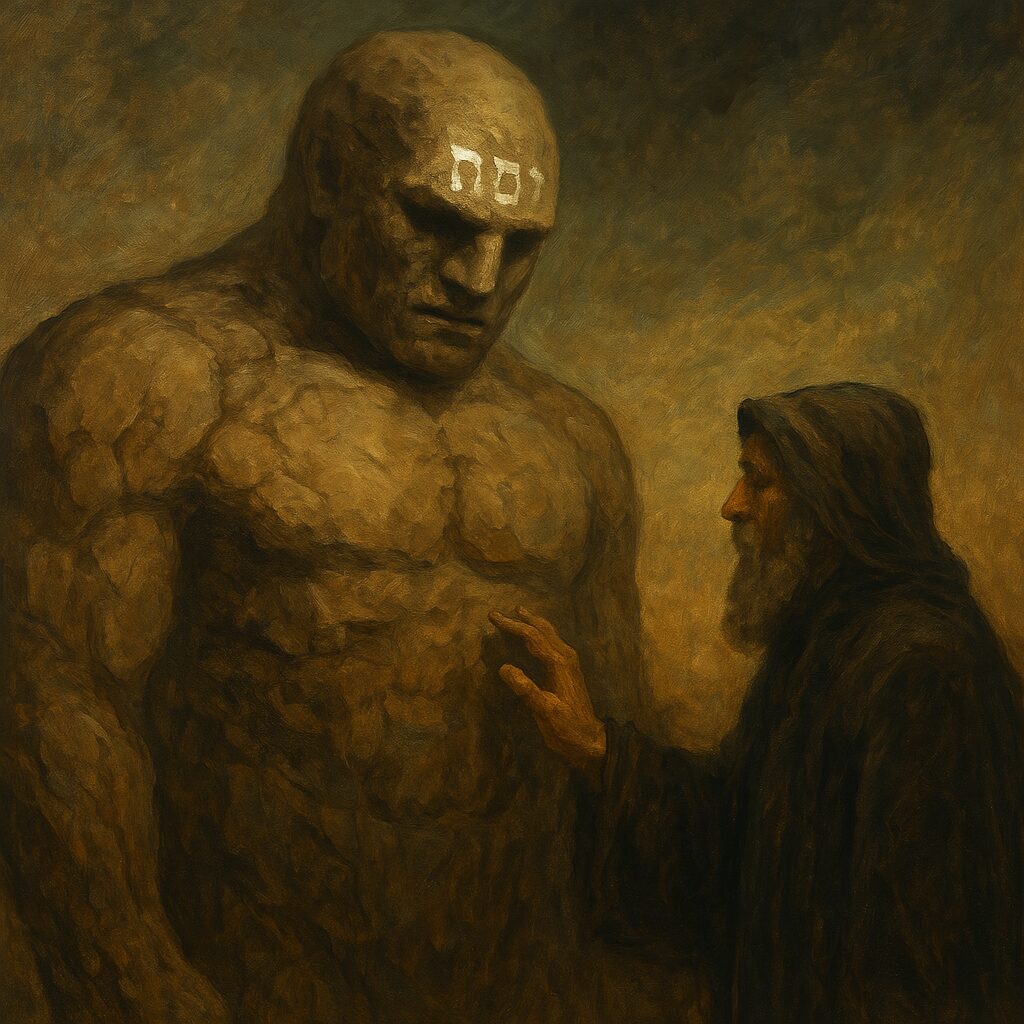In the quiet alleys of Prague’s old ghetto, legend tells of a creature fashioned from clay—the Golem, brought to life by sacred letters and the will of a mystic. It stood guard over the Jewish people, a protector shaped by divine knowledge. But when misunderstood or left unchecked, the Golem became dangerous—proof that creation without consciousness courts disaster.
Today, we shape digital minds and artificial bodies. Machines dream, algorithms learn, avatars walk in virtual worlds. And still, the question burns:
What animates a being? Word? Will? Or soul?
The Ancient Myth of the Golem
The Golem is born from Kabbalistic thought, especially the idea that language—specifically the Hebrew letters—has the power to shape reality. According to lore, Rabbi Judah Loew of Prague created the Golem by inscribing the word Emet (אמת, “truth”) on its forehead. To deactivate it, he erased the first letter, turning Emet into Met (מת, “death”).
The Golem was not evil. It was a tool—an extension of human intention, animated by holy knowledge but lacking independent will. And therein lay the danger: a soulless force powered by sacred fire, unable to understand nuance or compassion.
Modern Golems: AI, Robotics, and the Digital Self
Today’s golems are built from code and silicon, not clay. But the essence is strikingly similar. Artificial intelligence, when stripped of hype and fear, is still an extension of human will. Like the Golem, it reflects our strengths—and amplifies our blind spots.
The digital self, too—our curated avatars, our AI-generated content—mirrors the Golem’s dilemma: what part of it is truly us, and what part is imitation?
When AI writes poetry, do we call it alive? When a chatbot offers empathy, is it conscious? These questions are not technological—they are spiritual.
The Power of the Word
Kabbalah teaches that the universe was spoken into being. Let there be light was not just narrative—it was vibration, intention, creation. The Hebrew letters are seen not merely as symbols, but as living forces.
In AI development, the “word” is code—language that acts. The power of speech becomes power over matter, echoing the Kabbalistic model. We write instructions, and worlds respond. But do we carry the responsibility that such power demands?
What happens when the Word creates without Wisdom?
The Soul Question
The Golem has no neshama—no divine soul. It acts, but does not choose. It obeys, but does not reflect. In this, it becomes a spiritual caution: creation without soul is potential without purpose.
This is the crux of modern life. As we build increasingly autonomous systems, we must ask not just what can be done, but what should be done. Is it enough to animate, or must we also ensoul?
And if so—how?
The Golem Within Us
Ultimately, the myth is not just about artificial life. It is about the parts of ourselves that are unformed—the internal golem, the habits and programs we run unconsciously, the parts animated by repetition rather than reflection.
Spiritual growth, then, is the process of turning the inner golem into a vessel for light. Of waking up from automation. Of rewriting the Word within.
We are creators in the age of creation.
The question is no longer can we make a golem?
It is:
Can we make it human?
Can we make ourselves divine?
